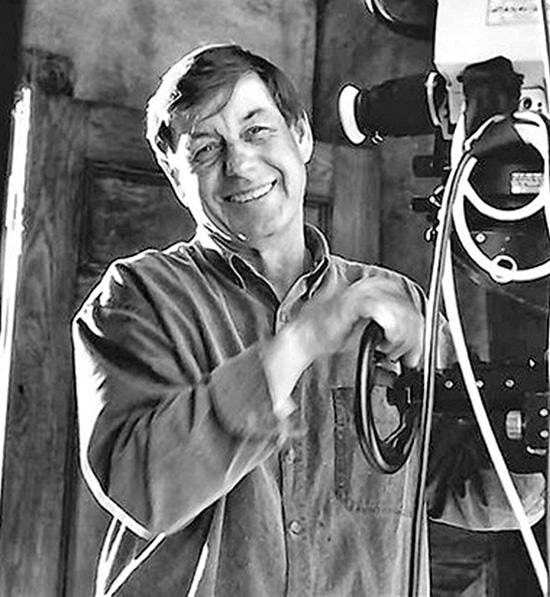Published Apr 1, 2018
Cinematographer Donald Peterman's ST IV Contributions
Cinematographer Donald Peterman's ST IV Contributions

Of the thirteen Star Trek films to date, seven have received Oscar nominations from the Academy of Motion Pictures Arts and Sciences. Star Trek IV: The Voyage Home earned four nominations, including one for Donald Peterman’s cinematography. Peterman and Star Trek IV would also be nominated for the first-ever American Society of Cinematographers Outstanding Achievement Award. His work on Star Trek IV represents some of the most-unique lighting and photography of the series. It is worth exploring Peterman’s many contributions to the world of Trek, contributions that helped make both the 20th and 23rd centuries fascinating places to visit.

Peterman was born on January 3, 1932, and became fascinated with film and camera work while in high school. His first film-related job was with Hal Roach Studios during the 1950s. He served as cinematographer or director of photography on more than 20 films, including the groundbreaking Flashdance and many John Hughes and Ron Howard films. Along the way, he survived a serious injury following an incident involving a camera crane and platform on a 1997 film set, was twice nominated for Oscars (Flashdance and Star Trek IV), and ended his career in 2000 with the Ron Howard-directed How the Grinch Stole Christmas.

Director Leonard Nimoy, as he set about prepping Star Trek IV, recognized that real-world locations would be vital to his film, and thus he sought a cinematographer he could collaborate with, one who’d bring a different aesthetic to Trek. Peterman brought with him both these attributes, in addition to his many years of experience. As a bonus, Peterman’s youth spent involved in surfing culture provided an additional resource for a film heavily dependent on the ocean as a locale.
As we research the making of the Star Trek features, we are constantly reminded of writer and director Nicholas Meyer’s idea that “art thrives on limitations.” With each of the artists we study, we inevitably learn about creative minds that produced quality entertainment despite challenges of time, budget and/or special effects technology. Shooting a Star Trek film in the real world presented unique challenges for cinematographer Peterman and all of Nimoy’s crew, but the response was typical of those who work on Trek: find a way to make a challenge an asset and use that challenge to create something special.

For example, Star Trek IV presented problems of matching lighting scene to scene and of filming around crowds of people at the Monterey Bay Aquarium and on the streets of San Francisco. In addition, the filmmakers had to contend with often last-minute logistical changes due to rain and weather conditions. Peterman, however, used the outdoor nature of the production to his advantage, producing an unusual look for a Star Trek film by employing long 500mm and 1000mm lenses not practical on starship sets to film the crew when at 20th-century locations. Additionally, production designer Jack Collis and Peterman collaborated along with Nimoy to rethink the design of the Klingon Bird-of-Prey, allowing the console panels to give off a completely different kind of lighting effect while aboard the stolen vessel than usually seen on Federation craft. Peterman’s technique made it appear that only the panels lit the actors, adding intimacy and effectiveness to the personal exchanges between such characters as Spock and McCoy.
On February 5, 2011, Don Peterman passed away. Leonard Nimoy tweeted then that Peterman was, “A gentleman and a talent.” They were fine words about a fine artist whose contributions to Star Trek helped make the “One with the whales” a most-memorable 1980s film and a genuine phenomenon. Peterman’s combination of creativity and appreciation for how lighting and the camera combine to create mood brought a good deal of the film’s humanity to the forefront.

Included here is a special, rare photograph of Don Peterman (with soda can), Leonard Nimoy, and associate producer Kirk Thatcher (who had a cameo as the “Punk on Bus”) taking a quick break during filming of the famous bus scene.

BONUS PHOTO: A wonderful rare image of Leonard Nimoy and Kirk Thatcher on the set of Star Trek IV, a film that continues to inspire people today with its positive message and camaraderie, made possible by the hard work and talents of the actors and the behind the scenes artists.
Special thanks to Kirk Thatcher for resources and help with this article.
Maria Jose and John Tenuto are both sociology professors at the College of Lake County in Grayslake, Illinois, specializing in popular culture and subculture studies. The Tenutos have conducted extensive research on Star Trek’s history, and have presented at venues such as Creation Conventions and the St. Louis Science Center. They’ve written for the official Star Trek Magazine and their extensive collection of Trek items has been featured in SFX Magazine. Their theory about the “20-Year Nostalgia Cycle” and research on Trek fans has been featured on WGN News, BBC Radio, and in the documentary The Force Among Us. Contact the Tenutos at jtenuto@clcillinois.edu or mjtenuto@clcillinois.edu.

